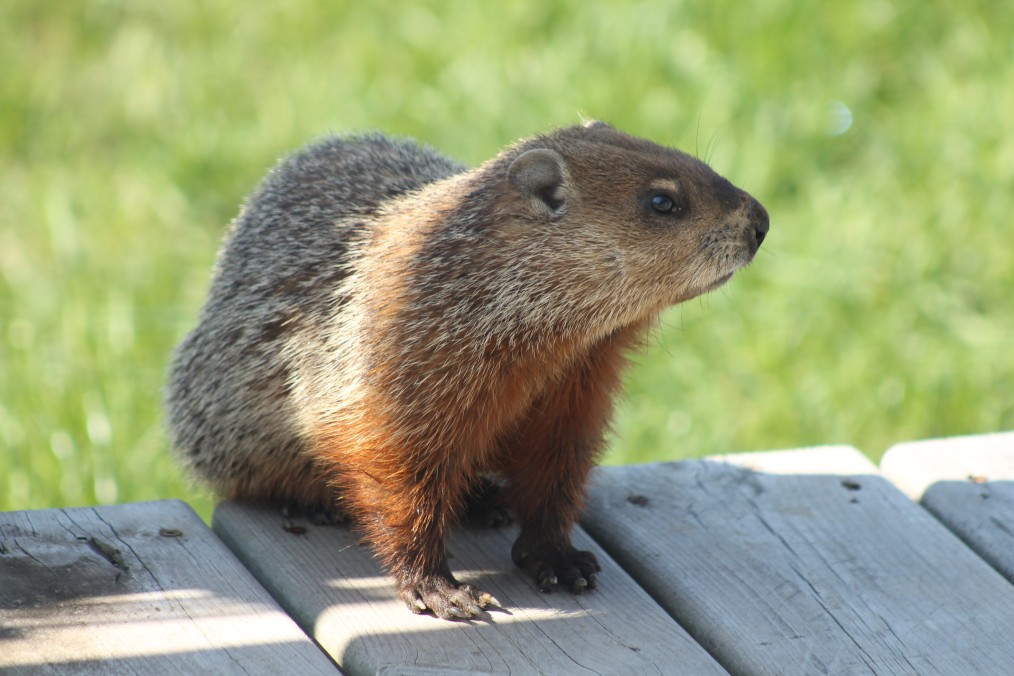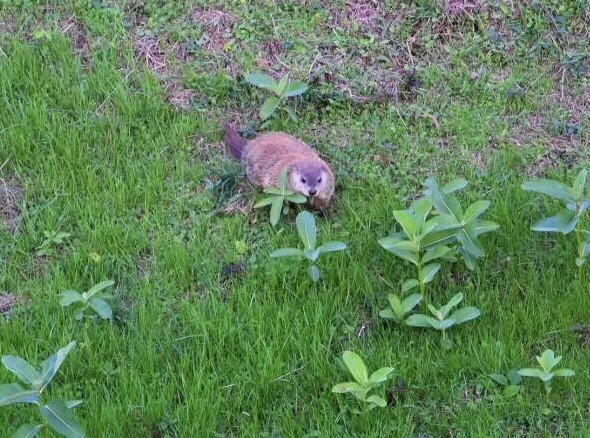 What Does It Mean When You See A Groundhog In The Summer?
What Does It Mean When You See A Groundhog In The Summer?
The groundhog is known for predicting the weather in early February, but it can make an appearance in your yard on a bright summer day as well.
A groundhog, also known as a woodchuck, is the largest member of the squirrel family and can be a nuisance pest when it invades your garden beds and yard. Even though groundhogs favor forested areas, they are very adaptable and will keep coming back to places where they are able to find plenty of food and a suitable shelter.
Groundhogs will readily come into your yard searching for food and a safe place to burrow. Therefore, you should take some steps to make your yard less attractive to this wildlife and to reduce the damage, for example, harvesting your garden crops as soon as possible to limit their food sources.
Read on to find out the exact reasons why you might see groundhogs on your property in the summer.
Do Groundhogs Come Out In The Summer?
Groundhogs start being active as soon as the nice spring weather sets in. They like warm, bright, and sunny weather, but dislike rain. This is because they can see clearly and inspect their surroundings better on a sunny day. Also, sunshine and warmth are suitable for them as they don’t need to adjust their body temperature anymore.
However, extreme summer heat doesn’t suit them either, and they will struggle. In such hot weather, they have to find ways to survive. They will therefore have to cool off in the water or remain hidden most of the time in their cool dens.
Groundhogs sleep in their burrows during the summer. In fact, they build a section in their den that looks like their summer house from where they can emerge more easily.
They will only go outside to find food when it’s not too hot, that is, during the very early morning and late evening hours. In extremely hot temperatures, they will be forced to stay in their burrows for the vast majority of the day and only come out for up to two hours a day. When not foraging for food in the summertime, the groundhog can often be observed sprawled out outside, grooming itself, taking naps, and enjoying the warm sunshine in the afternoon.
During the summer, usually in August and early September, groundhogs will eat a lot as they need to bulk up their fat stores in anticipation of winter and hibernation from mid-October. During this period, there will be an uptick in groundhog occurrences and indicators of their activity, such as bite marks and hollowed-out crops. The animal will consume up to a pound of food per sitting.
Another reason why groundhogs are frequently seen in summer is their breeding schedule. Females have babies after hibernation, from March to the end of April and even May. The young have enough time to mature through the summer so that they can build their own burrows in preparation for winter hibernation.
If you want to learn more about what exactly attracts groundhogs to your yard and what damage they can cause, check out our blog post.

Typically, groundhogs change their habitat according to the season. In the summertime, they are most prevalent as they prefer to live in locations where food is available, such as in open pastures and agricultural fields, suburban backyards, brush, and areas close to vegetable gardens. In the colder months of the year, they choose open woodlands and forested areas to hibernate.
To deter groundhogs from invading your yard in the summer, make it less appealing for them to dig through. These animals tend to burrow in drier soil, unlike many other ground-burrowing rodents. Therefore, keep the soil in your yard as moderately damp as possible. Instead of having your sprinklers on the whole time to cover the entire yard, water only the areas where groundhogs might burrow like dense shrubbery and bushes.
Is It Normal To See A Groundhog During The Day?
These animals are diurnal so it is normal to see a groundhog in your yard during the day. They are daytime foragers and are almost never seen outside of their den after sunset.
During the summer months, the groundhog will only search for food at dawn and dusk. So you will notice that your garden crops are receiving the most damage at this time. Also, check your fruit trees for any marks as these pests might gnaw and claw at them.
From spring to fall, groundhogs are most active during the day and sleep at night, so they don’t usually come out after dark. However, it might occasionally happen that you spot a groundhog roaming your garden at night.
What Do Groundhogs Eat In The Summer?
Groundhogs tend to eat twice a day in the summertime, with each feeding session lasting up to 2 hours.
They are herbivorous and will find almost all vegetable matter in your yard irresistible. During the summer, groundhogs will eat vegetables, such as corn, carrots, lettuce, celery, peas, red tomatoes, and green beans. They also enjoy a wide variety of sweet fruits, such as berries, cherries, apples, and pears. Alfalfa and clovers are some of their favorite foods.
If there aren’t any vegetables available, groundhogs will settle for grubs, insects, and snails, as well as twigs, bark, weeds, dandelion greens, grasses, herbs, and flowers.
Groundhogs live by seasonal behaviors, so mid-to-late summer is the best time to exclude and eliminate them from your property. As they are active during the day when they are often seen coming in and out of their dens, it is a good time to close their burrows by blocking their easy entry and exit points so that they can move somewhere else.
Groundhog removal is not an easy job, and you will also need a nuisance wildlife control permit to relocate the animal once it’s trapped. Therefore, if you’re having a groundhog problem in your yard, you should call in a wildlife control professional for help.
If you live in Westchester, Dutchess, or Putnam County, NY, or in Fairfield County, CT, and were searching online for groundhog removal services, you’ve found your answer! Contact our experienced team at Westchester Wildlife today so that we can effectively trap and get rid of the groundhog from your yard.
